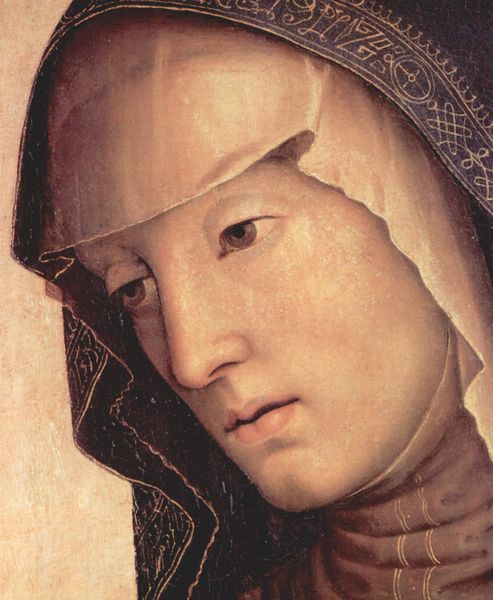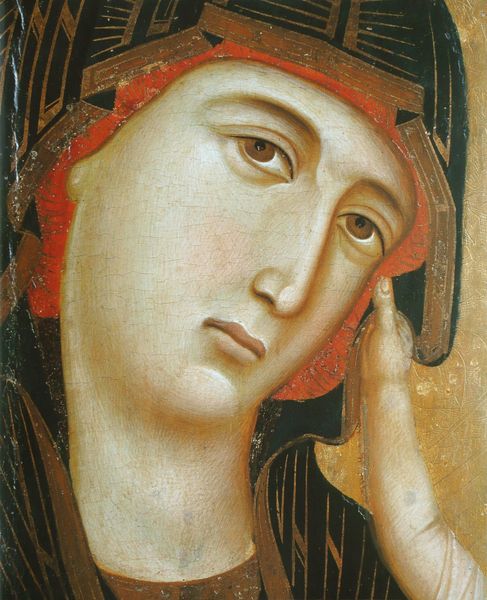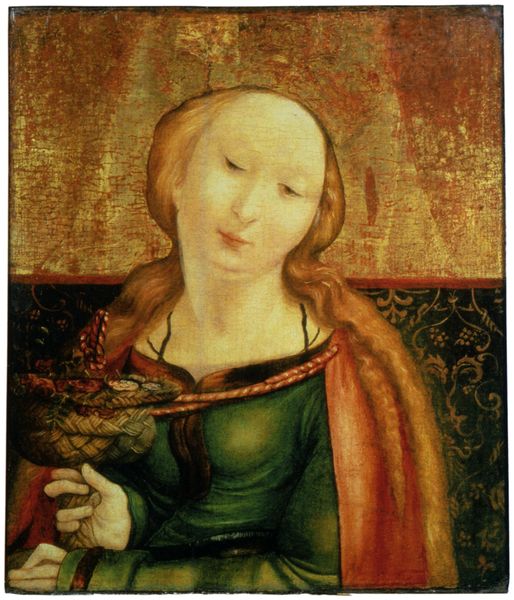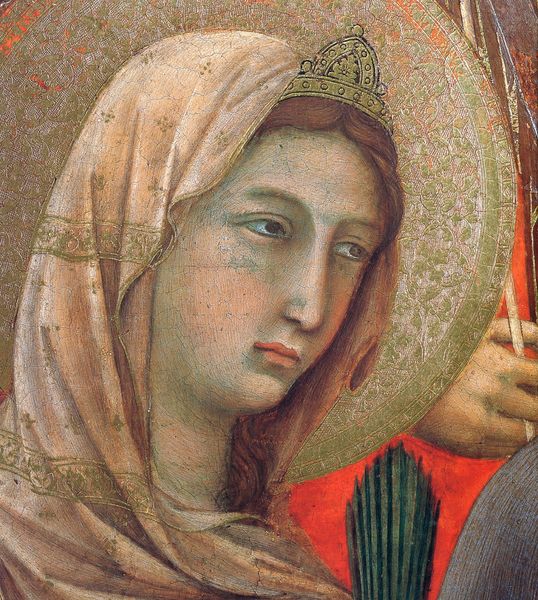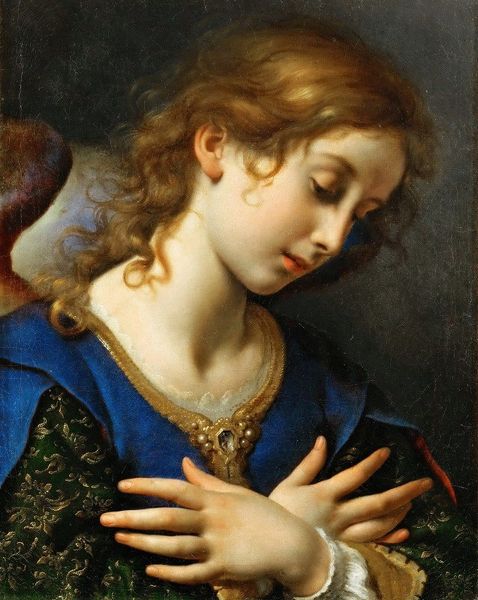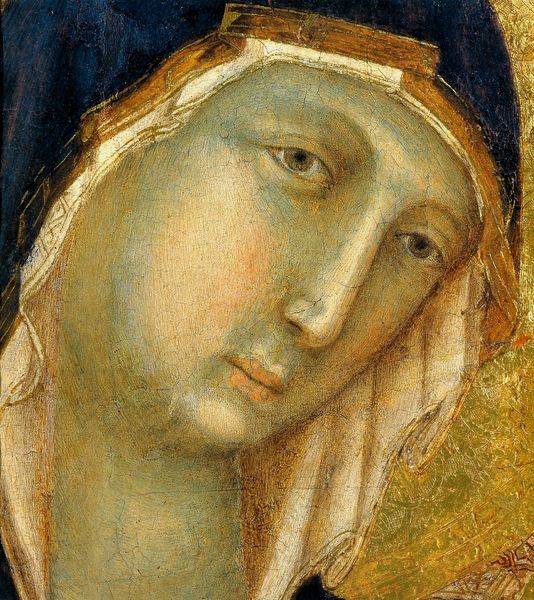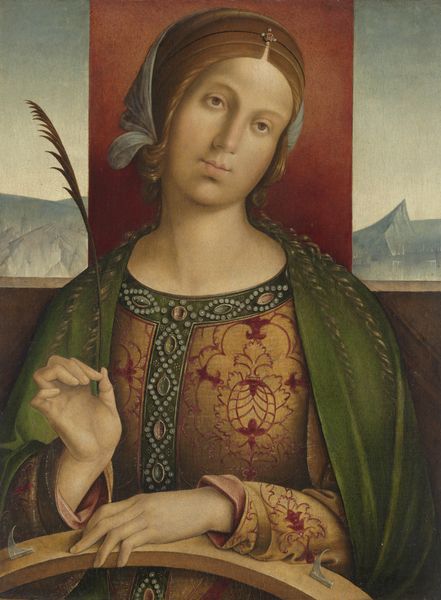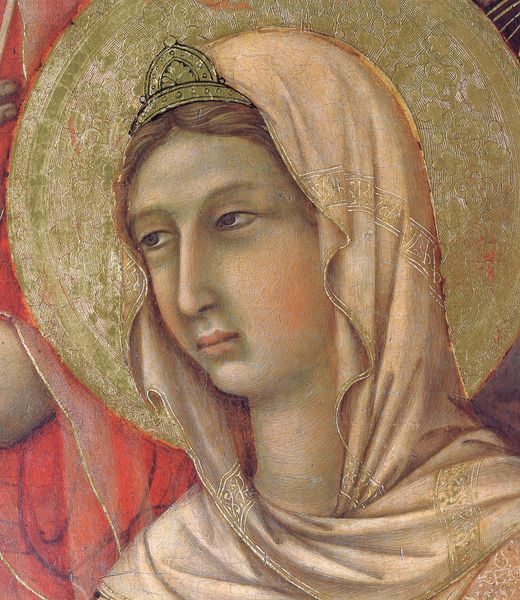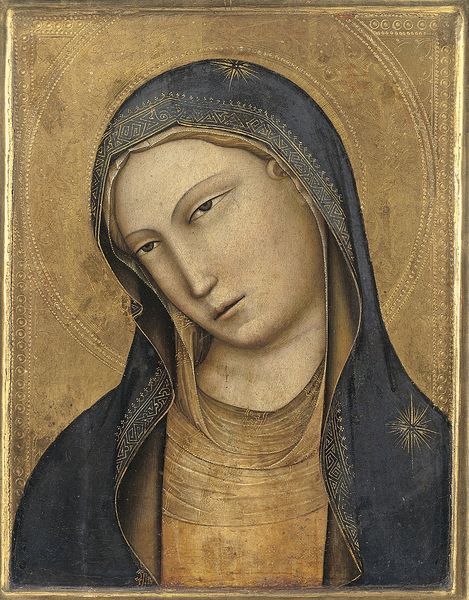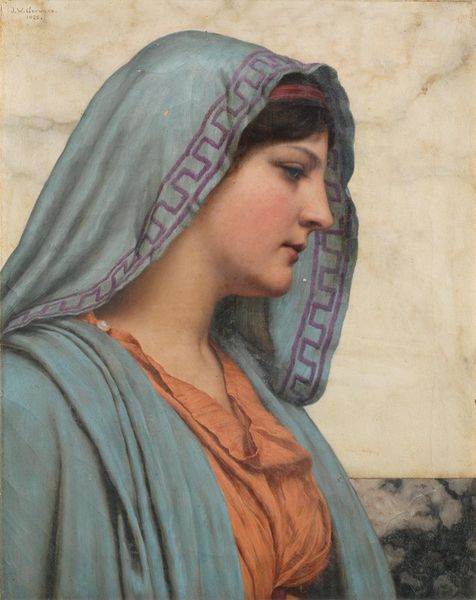
painting, oil-paint
#
painting
#
oil-paint
#
figuration
#
oil painting
#
classicism
#
christianity
#
history-painting
#
academic-art
#
italian-renaissance
Copyright: Public domain
Editor: So, this is part of Pietro Perugino’s "Polyptych of St. Peter," painted around 1500. Looking at this panel, with this figure in prayer, I feel a sense of serene devotion. What do you see in this work, particularly from a socio-historical point of view? Curator: I see a strategic construction of idealized femininity deeply intertwined with religious power. Consider the Italian Renaissance and the prevailing social structures. Women, particularly in religious contexts, were often confined to roles emphasizing piety and obedience. Perugino’s subject embodies this, doesn't she? But let's also note the idealized beauty – the smooth skin, delicate features. Who exactly did that standard of beauty benefit? Editor: You mean, who was setting those standards, and what was the impact? Curator: Exactly! This ideal reinforces a system where women's worth is often tied to their appearance and religious devotion. It subtly directs power, framing a specific kind of female subjectivity. Look at the colors—the blues associated with Mary, reinforcing the expectations of female purity and spiritual dedication. How might those color choices contribute to an internalized sense of limitation for women in that period? Editor: That’s a really compelling point. It's easy to get caught up in the beauty of the painting, but it reflects and reinforces a system of control, too. The serenity I initially saw could be a kind of…imposed peace? Curator: Precisely. By examining the intersections of art, gender, and historical context, we can begin to understand the complex power dynamics at play, revealing a rich historical dialogue between canvas and culture. Editor: It's given me a lot to reflect on – that an image so serene on the surface can tell such a complex and potentially limiting story about women and society at that time. Curator: Indeed. And understanding those layered meanings is what truly brings art to life.
Comments
No comments
Be the first to comment and join the conversation on the ultimate creative platform.
